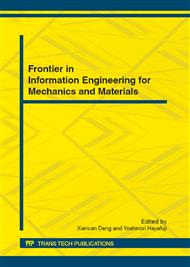p.457
p.461
p.465
p.470
p.474
p.478
p.482
p.486
p.491
Computational Simulation of Failures in Brittle Materials
Abstract:
The paper used computer simulation techniques to model the failure process of brittle materials. The simulation method is the finite element method. We have prepared a quad tree method program, through which the unit discrete planes structure, and the quick automatic generation of quadrilateral elements of good quality, and the discrete units of information and node information. We use object-oriented method of preparation of the finite element program, and use it for displacement in the destruction of the simulation, stress analysis. We simulate the failure process of brittle materials. Simulation, the choice of failure criteria and damage model are two key, they choose the proper relationship to the simulation results, good or bad. According to the characteristics of brittle materials, select the first strength theory as a failure criterion and a damage model suitable for brittle materials. The model assumes that a crack in the destruction of the cell boundary, and then through the crack surfaces and the distribution of the load to compensate for the energy released when the virtual cracks. Finally, the destruction of the material is given by the computer graphics form.
Info:
Periodical:
Pages:
474-477
Citation:
Online since:
July 2012
Authors:
Keywords:
Price:
Сopyright:
© 2012 Trans Tech Publications Ltd. All Rights Reserved
Share:
Citation:


